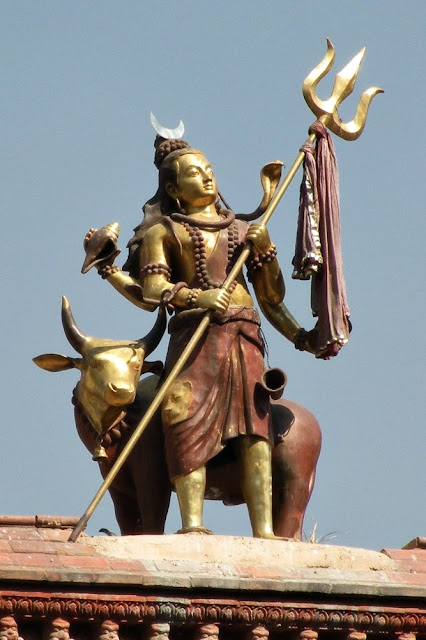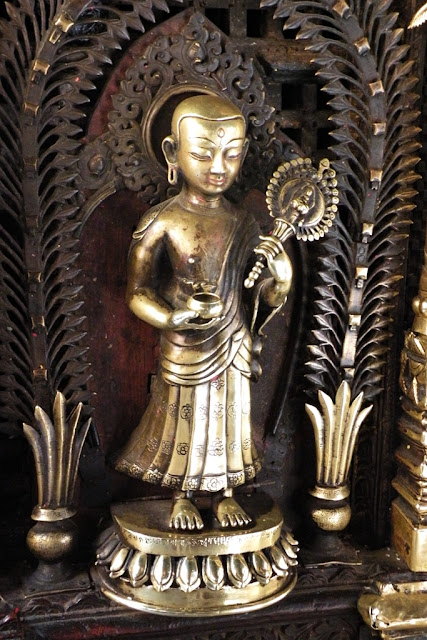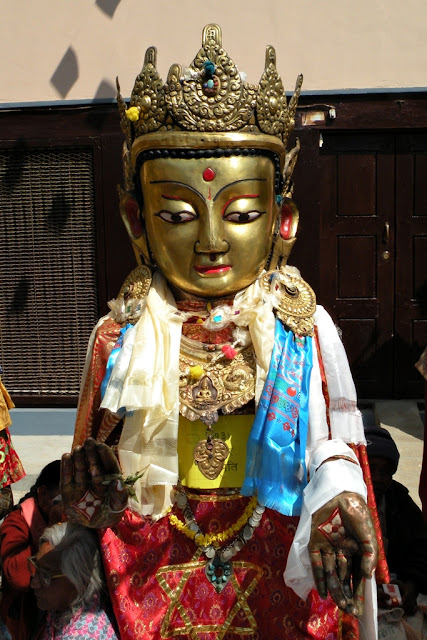In every temple, every monastery in Nepal as well as in many private home shrines you will find at least one metal statue of a Hindu or Buddhist deity. These statues vary in size - from a few inches to as tall as 12 feet - but any of them will strike you with beauty, facial expression and exquisite detailed work. Most of them are made from copper, sometimes from bronze or brass and usually gilded (with gold in its purest 24 carat form because gods and deities deserve the best after all), sometimes painted and additionally embellished with semi-precious stones. The earliest extant Nepali cast-copper sculptures date to the 6-8th century. Little has changed since that time as Nepalese artisans has kept the craft alive passing the skills from generation to generation.
Goddess Tara. Copper, Nepal, Licchavi period, c.8th century, The Victoria and Albert Museum
You don't really realise how much patience, labour,skills and time are put into each one of these sculptures untill you get to know the whole process of their creation.
Everything starts with a drawing. People show photographs of existing sculptures or pictures of old thangkas and specify the size and finish they want. From those two-dimensional images full-scale clay models are created follwoing the precise shape and proportions of the ancient figures.
Then a detailed mold of the statue is made out of wax. This step is one of the most difficult and time consuming, it can take up to three months. After the mold is finished it is covered with a layer of cow dung, mud and rice husks, a mixture that can withstand intense heat. An oven is prepared into which goes the mud-covered wax mold. The heat makes the wax melt out of the mud and dung covering leaving a hollow mold. Then the molten metal is poured into the same hole. Few people know the art of mixing the metal to get the best cast, it is a highly skilled profession. These few travel from one workshop to another around Kathmandu doing just this.
After welding it's time for the carvers to begin refining the surfaces. The carvers work with thin steel tools and small hammers. They engrave details into the fine decoration, picking out beads and jewelry and carving the traditional patterns on folds in the clothing.
Afterwards, the figures are polished, buffed and finally gilded, painted and embellished with stones. The whole process of creating such a sculpture takes between several months to several years. Everything is done completely by hand and these spectacular pieces of art showcase Nepal's fine metal working tradition.











Wow!!! I really enjoyed reading this article!!! I have been to Nepal a few times and saw such metal sculptures. Never realised how much work, time and patience is dedicated to create such beautiful masterpieces...it was interesting to read about the whole process involved in making them...i was surprised about the mixture of mud and cow dung hehe great article!!! 😊😊😊
ReplyDelete